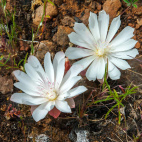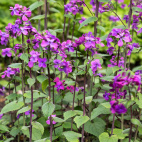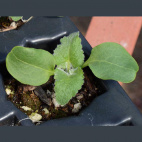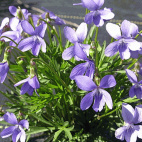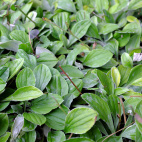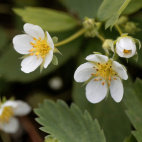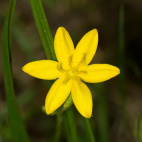Color
Availability
USDA Zone
Region
Type
Duration
Season
Germination
Soil
Sunlight
Height
Use
Narrow Your Search
Color
Availability
USDA Zone
Region
Type
Duration
Season
Germination
Soil
Sunlight
Height
Use
Wildflower Seeds - Dry West Region
The Dry West Region is one of the larger areas, but also has the fewest inhabitants. This area encompasses all of the areas in the American West that receive very little rainfall. The natural vegetation varies from true desert in the south, to sagebrush drylands in the north as well as in the higher elevations. The native species that grow in these areas are by nature very drought resistant, and able to handle the harsh conditions that are found there. The annuals that are displayed on this page need a steady source of water, so will need regular watering if they are grown. If you want to just see Western wildflower seeds for sale that will grow well without a lot of supplemental water, then filter the results by selecting "Native Wildflowers" and "Dry Soil" in the left column.
-
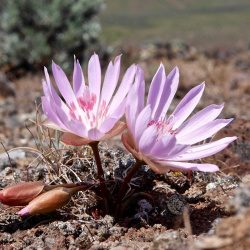 Out Of Stock
Bitterroot Seeds
Lewisia rediviva
Said to be one of the rarest wildflowers in America, this pink and white beauty was discovered by Lewis and Clark in Montana. The low-growing perennial is a little tricky to germinate but does best in rocky soil with good drainage.Quick View$3.75 Pkt - $120.00 / Oz
Out Of Stock
Bitterroot Seeds
Lewisia rediviva
Said to be one of the rarest wildflowers in America, this pink and white beauty was discovered by Lewis and Clark in Montana. The low-growing perennial is a little tricky to germinate but does best in rocky soil with good drainage.Quick View$3.75 Pkt - $120.00 / Oz -
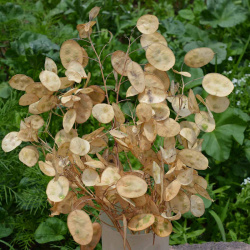 Money Plant Seeds
Lunaria biennis
Money may not grow on trees, but it does grow on wildflowers! Also known as Honesty, Moonflower, and Silver Pennies, these silvery translucent seedpods have been popular in dried flower arrangements since Colonial times. The fragrant lavender flowers also attract butterflies when they are in bloom.Quick Viewx
Money Plant Seeds
Lunaria biennis
Money may not grow on trees, but it does grow on wildflowers! Also known as Honesty, Moonflower, and Silver Pennies, these silvery translucent seedpods have been popular in dried flower arrangements since Colonial times. The fragrant lavender flowers also attract butterflies when they are in bloom.Quick ViewxMoney Plant Seeds
Lunaria biennis
Money may not grow on trees, but it does grow on wildflowers! Also known as Honesty, Moonflower, and Silver Pennies, these silvery translucent seedpods have been popular in dried flower arrangements since Colonial times. The fragrant lavender flowers also attract butterflies when they are in bloom.
$3.48 Pkt - $7.41 / Oz -
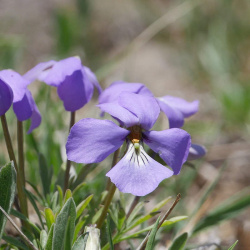 Store in the FridgeOut Of Stock
Prairie Violet Seeds
Viola pedatifida
A beauty to behold, this prairie princess is clad in classic violet garb. This petite wildflower forms clumps that are near the ground, and blooms in the cooler seasons of spring and fall.Quick View$3.75 Pkt - $240.00 / Oz
Store in the FridgeOut Of Stock
Prairie Violet Seeds
Viola pedatifida
A beauty to behold, this prairie princess is clad in classic violet garb. This petite wildflower forms clumps that are near the ground, and blooms in the cooler seasons of spring and fall.Quick View$3.75 Pkt - $240.00 / Oz -
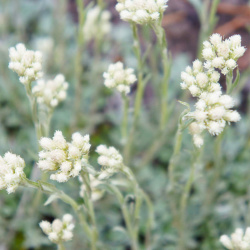 Pussytoes Seeds
Antennaria plantaginifolia
Children will love these fun, fuzzy flowers because they look and feel like tiny kitten paws. The dense, attractive foliage is drought resistant and makes an excellent ground cover for rocky, dry locations.Quick View$3.96 Pkt - $280.00 / Oz
Pussytoes Seeds
Antennaria plantaginifolia
Children will love these fun, fuzzy flowers because they look and feel like tiny kitten paws. The dense, attractive foliage is drought resistant and makes an excellent ground cover for rocky, dry locations.Quick View$3.96 Pkt - $280.00 / Oz -
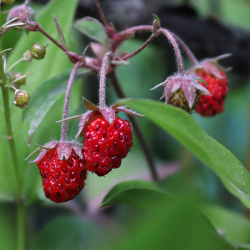 Wild Strawberry Seeds
Fragaria virginiana
Native to the United States, this plant bears tiny, wild strawberries. They are flavorful and sweet, albeit seedier than their cultivated cousins. Great for the homestead garden!Quick View$3.96 Pkt - $400.00 / Oz
Wild Strawberry Seeds
Fragaria virginiana
Native to the United States, this plant bears tiny, wild strawberries. They are flavorful and sweet, albeit seedier than their cultivated cousins. Great for the homestead garden!Quick View$3.96 Pkt - $400.00 / Oz -
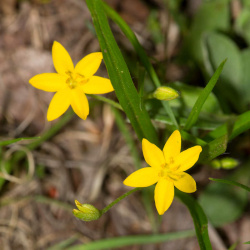 Out Of Stock
Yellow Star Grass Seeds
Hypoxis hirsuta
Tiny yellow star-shaped flowers appear on this tufted grass-like plant. This attractive perennial is perfect for rock gardens, but it is so rare that the seeds are often not available.Quick Viewx
Out Of Stock
Yellow Star Grass Seeds
Hypoxis hirsuta
Tiny yellow star-shaped flowers appear on this tufted grass-like plant. This attractive perennial is perfect for rock gardens, but it is so rare that the seeds are often not available.Quick ViewxYellow Star Grass Seeds
Hypoxis hirsuta
Tiny yellow star-shaped flowers appear on this tufted grass-like plant. This attractive perennial is perfect for rock gardens, but it is so rare that the seeds are often not available.
$3.96 Pkt - $136.00 / Oz
The Dry West Region is one of the larger areas, but also has the fewest inhabitants. This area encompasses all of the areas in the American West that receive very little rainfall. The natural vegetation varies from true desert in the south, to sagebrush drylands in the north as well as in the higher elevations. The native species that grow in these areas are by nature very drought resistant, and able to handle the harsh conditions that are found there. The annuals that are displayed on this page need a steady source of water, so will need regular watering if they are grown. If you want to just see Western wildflower seeds for sale that will grow well without a lot of supplemental water, then filter the results by selecting "Native Wildflowers" and "Dry Soil" in the left column.






